A drill press, commonly known as a drilling machine, is used to produce holes in hard materials. A drill press can do so much more than just drilling. It can do countersinking, counterboring, reaming, tapping large or small holes, sanding, etc. all this can be done with different bits. Here we will explain how does a drill press work and everything that relates to it.
There are small, medium, and big drill presses available. You can choose whichever you want. There are two main types of drill presses:
- Hand-feed: the hand-feed drilling machines are the simplest and most common type of drilling machines used today. This drilling machine is hand-fed by the operator, which means that the users operating the machine use a feed handle; this allows the operator to feel the action as the material is getting cut. This machine can be bench or floor mounted; an electric motor drives them; they are high-speed machines and is used for work that requires ½ inch or smaller holes.
- Power feed: the power-feed drilling machine is heavier and larger than hand-feed; they automatically work without using a feed handle; they can work thousands of an inch per revolution. They are used for work that requires over ½ inch holes, and the speed varies from 50 to 1,800 RMP. Specifically when looking for power you must know the difference between the drill of different volt.
Contents
The Parts Of A Drill Press Tool
- Head: This is the part of the drill press which houses the spindle as it is attached at the top region of the spindle, the spindle can only move upward or downward, which is why this portion of the tool is responsible for the spindle.
- Spindle: this is the most essential part of a drill press. It is used to hold the tool responsible for rotations. At the bottom of the spindle, a chuck is placed, a chuck is used to hold the drill bit.
- Column: this is used to tie the table. It is a long rod that is in a vertical shape with the table, the column, and the table are at 90 degrees with each other.
- Table: table is the most important and the best part of the tool. The table is what holds the material in place. It can be moved in either upward or downward direction and can be rotated around the column as per the requirement. You can make the table round shape or rectangular shape table for your drill press.
- Base: this part of the drill press is made up of steel or iron; this is to support the columns and help stabilize it. With the help of this, the drill press can be placed in an upward direction.
- Power transmission: like every tool, a drill press also needs the power to work. The part of the drill press that transmits the power for it to work is called power transmission. This process takes place with the help of a v-bolt, and a pair of pulley stacks opposite each other.
- Chuck: Chuck is the part that holds the actual bit, the chuck opens with a key just like some hand-held drills, you insert the bit, snug it up, and it is ready to be used. Some models have keyless chuck. You can tighten the bit with the twist of your hand.
One of the best things about a drill press is that if the tool is not working correctly, you can quickly figure out which part of the tool is not working and replace it with a new one. It is not difficult. All the parts are re-attachable. However, it is vital that you know the different parts of your drill press tool; this way, you can understand its operations and fix it.
How To Use A Drill Press?
Before setting up your drill press tool, make sure the drill is unplugged.
- Speed: the first thing to do before using your drill press is to set the speed. At the back of the drill press, there is a motor that is attached to a series of pulleys, and a series of belts connect these pulleys. You can set the speed according to the required amount you want by moving the drive belt from one pulley to another,
- The smaller the pulley, the faster it spins. If your cutting metals, you should go for a slower speed, and if your cutting wood, then go for a faster speed. There is a reference guide that you can follow; this shows you the various configurations and RPM; depending on the drill press model you get, the speed will vary, but for most drill presses, the speed ranges from 280 RPM to 3000 RPM.
- Bit: the tool has a chuck that can be opened, slide the bit your using in the chuck, then tighten the chuck with the key that is provided.
- You should use the slower speed for the largest drill bit as if you are using a foster bit or a hole saw and use higher speed for thin bits. Also see this list of different bits to get some idea.
Some bits to use:
- Brad-point bits.
- Forstner bits.
- Taper and countersinks.
- Self-centering bits.
- Twist bits.
- Spade bits.
- Handle: the handle of the tool has two critical adjustments. The first one is the depth-stop; this can be adjusted by tightening the knob on the handle; this allows you to set the depth of each hole.
The other adjustment is a feature that lets you lock the drill press down to a certain depth. The drill press comes with three handles, and these handles can be unscrewed. E.g., if your handle is hitting your fence, you unscrew it and work with the other two handles.
- Table adjustment: you need to set the table according to your work requirements, some models come with a crank that adjusts the height of the table, but for other models, it moves freely. The table that the drill press comes with is perfect when you’re working with metal, or if you are doing small drilling work if you want, you can attach a drill press table; this gives you a much larger work surface area. It also has a fence that you can clamp in position. This allows you to move your workpiece around, giving you a better safety margin as the piece is pressed against the fence.
- Secure the workpiece: before starting to drill, ensure that the material your working on is secured. Never start working without making sure the material is secured.
- Drilling: the final step is to drill. This step is easy; once you set your speed, you’ve aligned your table, adjusted the handle, choose your bit, and secured your material its time to drill. Make sure your drill is spinning at the desired speed, then by swinging the rotating lever, put the bit over the work piece. When you are done, release the lever, and it will get back to its original position.
- Drum sander: another feature of the drill press is that you can attach a drum sander instead of a drill bit and turn the drill press into a tool to sand curves.
Pros And Cons Of A Drill Press
- You can use bits that you would not usually use on a hand drill like hole saws, wing cutter, drum sander, etc.
- It is easy to use.
- Has adjustable speed.
- High Power.
- Accuracy.
- Heavy: it isn’t easy to move the tool from one place to another quickly. You need to get the work to them.
- Expensive.
Best Drill Presses In The Market
1. WEN 4208 8 in. 5-Speed Drill Press
Features:
- 1/2-inch keyed chuck with onboard key storage.
- Operates at five different speeds ranging from 740, 1100, 1530, 2100, and 3140 RPM.
- The voltage is 120 volts.
- It has the Horsepower of1/3 HP.
- Features a table that bevels up to 45-degrees.
- It weighs 31 pounds.
- The power source is corded-electric.
To get more idea about Wen drill see this comparison.
2. SKIL 3320-01
No products found.
Features:
- The voltage of the tool is 120 volts.
- It weighs 50.8 pounds.
- The speed is 3050 RMP.
- The power source is battery powered.
3. Delta 18-900L
- Auto-tensioning belt drive system allows for fast and easy speed changes while maximizing transmission efficiency
- Full 6-inch quill stroke for deeper drilling applications and best-in-class capacity
- Micro-adjustable depth stops and independent depth scale allows the user to zero the scale and set up for repetitive...
Features:
- The power source is corded electric.
- The voltage is 120 volts.
- This item weighs 261 pounds.
- It has an auto-tensioning belt system; this allows fast and easy speed change.
- It comes with a LED-light; this illuminates the work surface.
FAQs
1. Is a drill press worth it?
The answer to this is yes. Having a drill press to use simplifies your job, be it for easy, simple projects or building a cabinet. Using a drill press will allow you to make even precise drills holes. You will find this tool very handy.
2. What is a drill press used for?
A drill press is mainly used to drill holes, but you can also use it to enlarge holes, drill circles, sanding, etc. you can do all this with the help of different bits attached to the drill press.
Final Thought
Having a drill press is very handy because there are certain procedures that you cannot do without a drill press. A drill press simplifies a lot of work and is a good investment. The only main drawback of this tool is its weight, which means that it is difficult to move the tool around from one place to another. Also please see this post about using drill safely.
This tool is powerful, has variable speed, has high torque, can fit in different bits, and is very adjustable. Many users who use this tool always give positive feedback; a drill press is highly recommended. Our guide on how does a drill press work will help you understand everything about it.


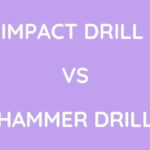
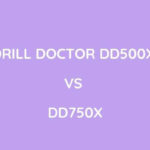

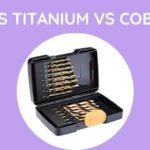
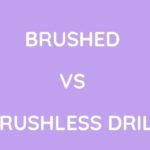
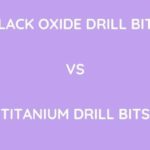
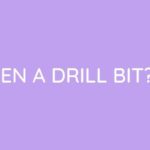
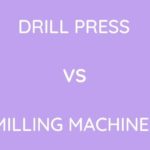
Leave a Reply